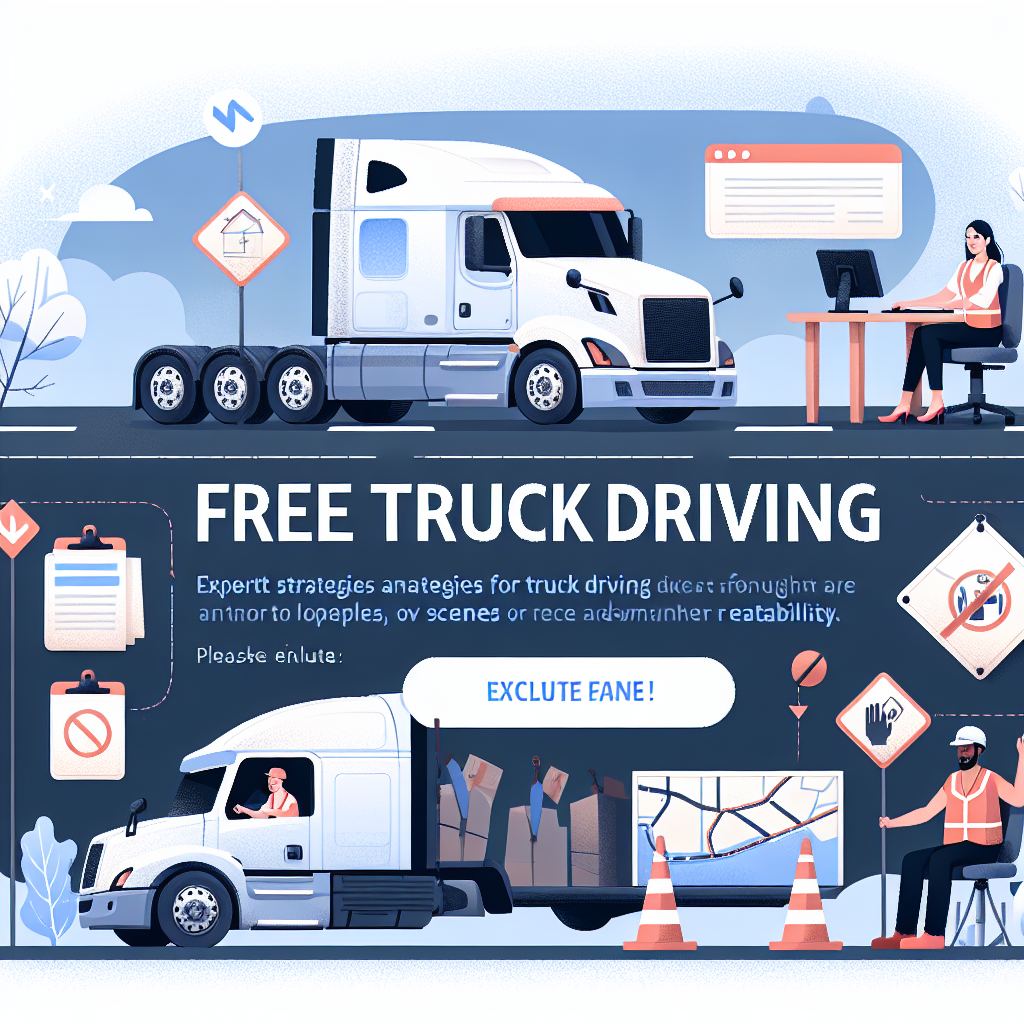Free Truck Driving: Expert Tips and Strategies can help anyone explore tuition-free or low-cost routes into a driving career, whether you’re changing fields, returning to work, or seeking a scalable skill set. This guide covers practical steps to access employer-sponsored training, scholarship options, apprenticeship programs, and money-saving practices so you can get your CDL and start earning sooner.
Free Trucking: Practical Tips and Strategies
Finding a no-cost path to truck driving often means combining research, timing, and negotiation. Employers frequently sponsor CDL training in exchange for a commitment to work for their company for a set period. Community programs, workforce boards, and veterans’ benefits can also fund certification. A focused plan will shorten your learning curve and reduce out-of-pocket expenses.
Where to find tuition-free or employer-sponsored training
Start locally and expand outward. Look for:
- Large carriers advertising paid CDL training or tuition reimbursement
- Local workforce development centers offering grants or training vouchers
- Community colleges with subsidized programs and sliding-scale fees
- Apprenticeship and on-the-job training opportunities through unions or industry groups
For a profile of demand, responsibilities, and earning potential that helps shape realistic expectations, refer to the Bureau of Labor Statistics profile of heavy and tractor-trailer truck drivers.
Steps to maximize free training opportunities
Follow a step-by-step approach to increase your chances of a no-cost entry into the field:
- Research carriers that list “paid training” or “sponsored CDL” in job posts.
- Contact your state workforce agency about grant programs for in-demand jobs.
- Ask community colleges about scholarships, payment plans, and work-study options.
- Check veteran and military transition resources for training benefits.
- Network at local trucking job fairs and online forums to uncover hidden openings.
Preparing for employer-sponsored programs
Even when training is free, companies expect reliable candidates. Improve your prospects by:
- Obtaining a commercial learner’s permit (CLP) quickly—this makes you eligible for range time.
- Maintaining a clean driving record and resolving outstanding violations.
- Passing basic drug screening and physical exams when required.
- Building soft skills: communication, punctuality, and basic vehicle maintenance awareness.
Money-saving hacks while training
Some expenses remain—food, housing near training centers, background checks—so reduce costs by sharing rides, using short-term rentals or hostels, and applying for emergency training grants. Consider part-time local work if your training schedule allows. Track expenses to plan a realistic budget for the first months on the road.
Transition advice for career changers
Truck driving is a solid option for people shifting careers at any stage. If you’re exploring new possibilities later in life, resources geared to midlife career shifts can be helpful; for example, see Starting Fresh: New Career Paths for Women at 50 for perspective on retraining and relaunching your working life. Emphasize how transferable skills—time management, customer service, problem solving—apply to driving roles.
On-the-job success: tips for new drivers
Once you’re on the road, focus on building a strong safety record and reputation:
- Follow logbook rules and manage hours-of-service carefully.
- Practice defensive driving and routinely inspect your vehicle.
- Communicate clearly with dispatch and clients to build reliability.
- Seek mentorship from experienced drivers to pick up practical tricks.
Short checklist before you commit
- Confirm any employment commitment length and repayment terms for training.
- Understand your pay structure during and after training.
- Verify who covers licensing fees, drug screens, and physicals.
- Plan for the first 30–90 days of expenses after training ends.
FAQ
Q: Can I get a CDL without paying for school?
A: Yes. Many carriers and workforce programs offer sponsored or tuition-free CDL training in exchange for a service commitment. Investigate local employers and state-sponsored grants first.
Q: How long does employer-sponsored training usually take?
A: Paid programs typically last 3–8 weeks for classroom and range time, followed by road training with a mentor driver. Exact timelines vary by company and state licensing requirements.
Q: Will a no-cost training program require me to stay with the company?
A: Often yes. Many sponsored programs require a work commitment; review the contract carefully to understand repayment clauses or required tenure.



